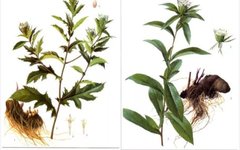
#01
Botanical Origin of Atractylodes
The medicinal Atractylodes is derived from the Asteraceae family, specifically from the species Atractylodes lancea (Thunb.) DC. or Atractylodes chinensis (DC.) Koidz. Morphologically, Atractylodes is a perennial herbaceous plant belonging to the Atractylodes genus, which has a complex classification due to transitional and unstable variations in leaf morphology. The Atractylodes lancea from the Maoshan area (Jiangsu province) is considered a genuine medicinal material, also known as southern Atractylodes.

Left: Atractylodes chinensis, Right: Atractylodes lancea
Due to the destruction of wild resources of Atractylodes lancea in early times, it has become quite rare. Although some subspecies are cultivated in certain areas of Hubei, they are mostly exported to Japan and South Korea, with little domestic use. Atractylodes chinensis is now the primary source used in traditional Chinese medicine.
#02
Differences Between Atractylodes lancea, Atractylodes chinensis, and Atractylodes ganshu
Atractylodes lancea
This is a perennial herb. The rhizome runs horizontally and is tuberous. The stem is ridged, can reach half a meter in height, and is either unbranched or slightly branched at the top. The leaves are alternate, without petioles, and are not divided; the size of the leaves is inconsistent, with the middle leaves being larger and ovate, while the leaves at both ends are smaller, ranging from ovate-lanceolate to elliptical. The leaf margins are serrated, dark green and glossy on the upper side, and light green on the underside, with prominent veins that are clearly visible.
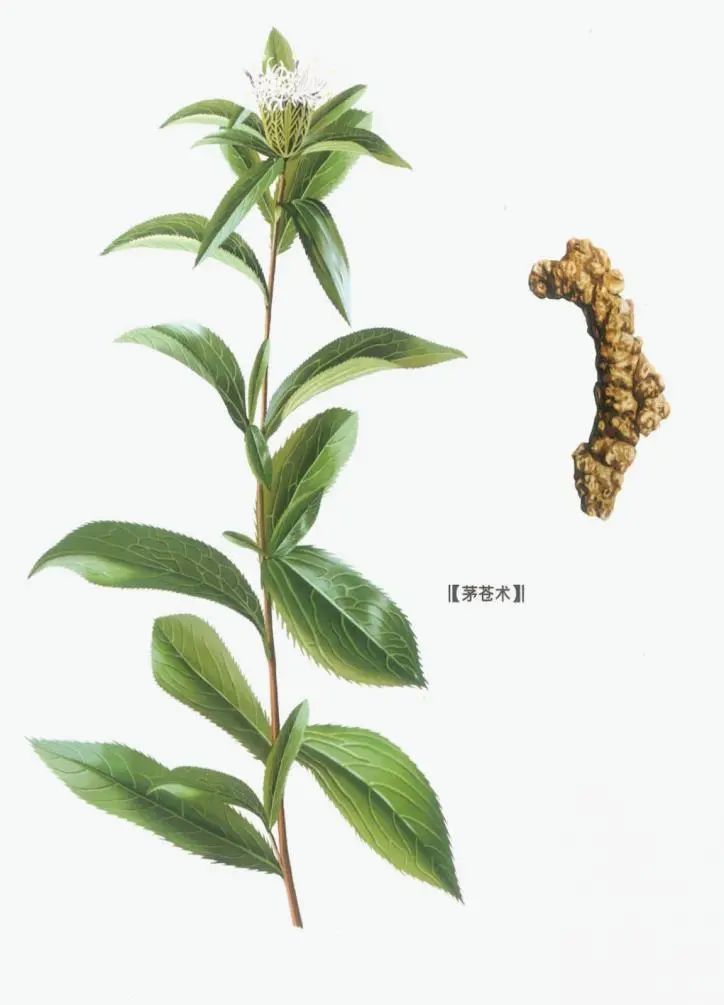
Atractylodes lancea flowers from August to October, with a cylindrical involucre covered in fine hairs, producing clusters of small white or slightly reddish flowers at the top of the stem. Multiple small flowers bloom together, which can be bisexual or solely female. The corolla is tubular and divided into five lobes, with the lobes being linear. Flowering must lead to fruiting, with the fruiting period from September to December. The achene of Atractylodes lancea is obovate and covered in dense yellowish-white hairs.
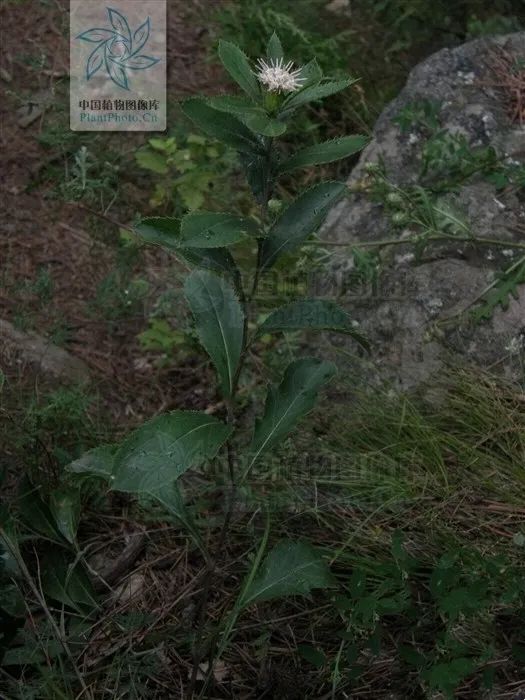
Atractylodes chinensis
This species differs from Atractylodes lancea primarily in leaf morphology; Atractylodes chinensis has broader leaves with irregularly serrated margins, resembling feathers, typically with five deep lobes and no petioles.
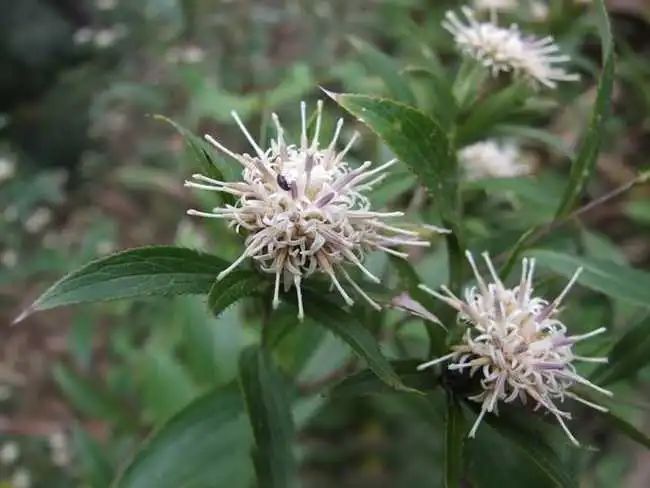
The flower buds are also slightly wider than those of Atractylodes lancea. The degenerated stamens of Atractylodes chinensis do not curl, while those of Atractylodes lancea do. The flowering period is from July to August, and the fruiting period is from August to September.
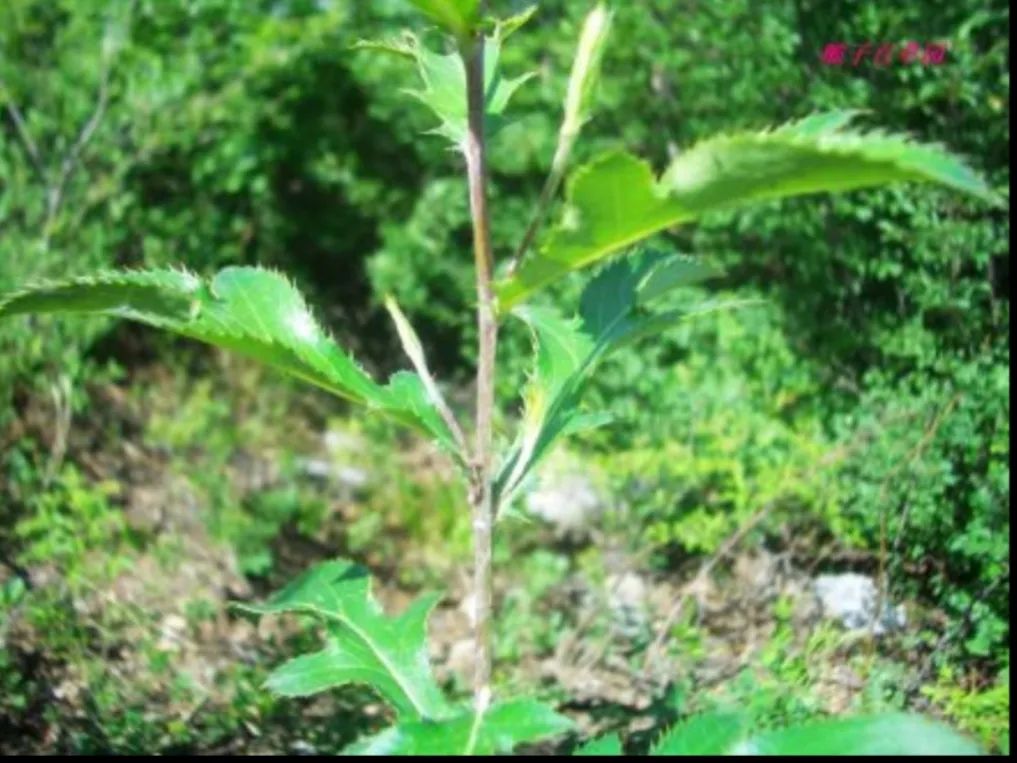
Atractylodes ganshu
Atractylodes ganshu is primarily found in Northeast China, but it is not used as a medicinal material for Atractylodes; instead, it is exported to South Korea and other regions, processed and used as “Bai Zhu” (White Atractylodes) for its spleen-strengthening properties.
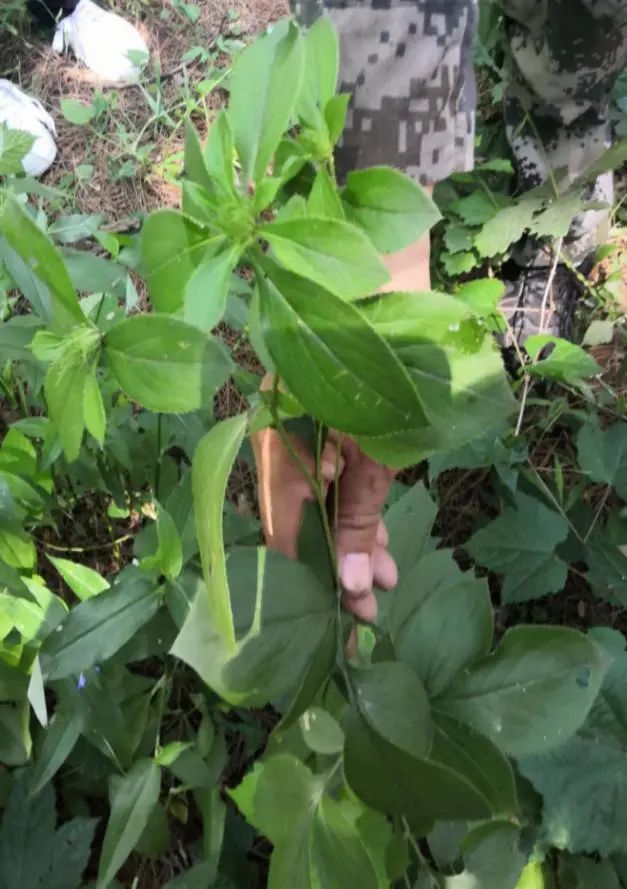
The main difference from the other two species is that Atractylodes ganshu has long petioles, while the former two do not.
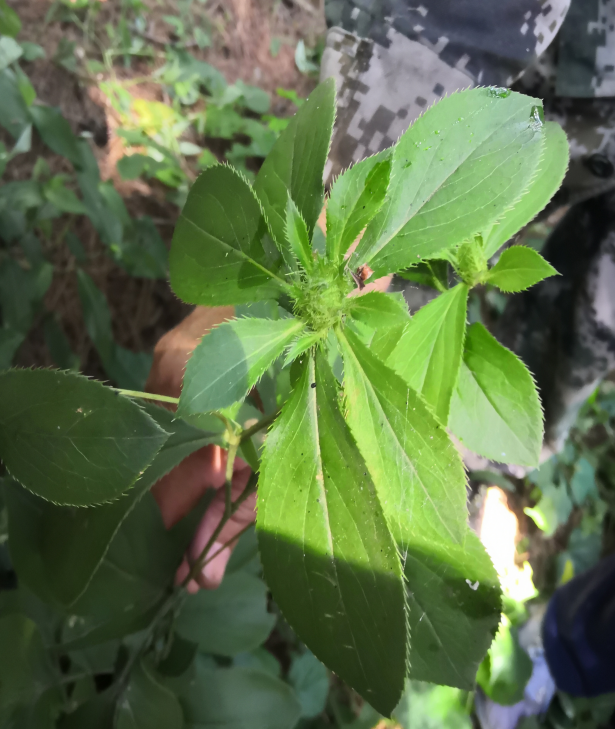
The upper leaves have three lobes, while the lower leaves are feather-like with three to five lobes, the lobes being elongated and gradually narrowing at the base. The leaf margins have small serrated hairs. The flowering period is from August to September, and the fruiting period is from September to October.
#03
Atractylodes Medicinal Slices
Atractylodes is used medicinally from its roots. The roots are tuberous and cylindrical, about the size of an adult’s index finger, with a dark brown surface. When the outer skin is removed, they appear yellowish-brown. The cross-section reveals scattered brownish-yellow oil chambers that emit a pleasant fragrance.
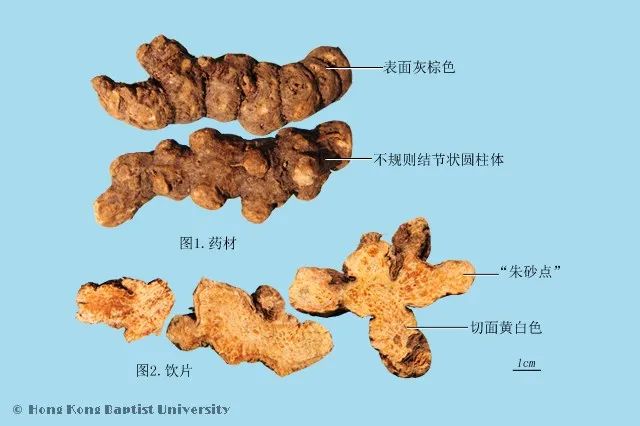
Many people use the number of “vermilion dots” to determine the quality of Atractylodes. So, what are “vermilion dots”? They refer to the scattered vermilion-colored specks visible on the smooth cut surface of the medicinal material, which are merely secretions from the oil chambers. If Atractylodes lancea is exposed for a while, it will also exude white needle-like crystals, as shown below.
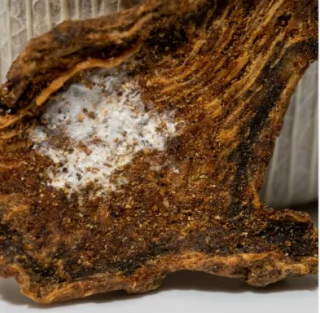
Differences Between Raw and Processed Atractylodes:
The processing method for roasted Atractylodes involves taking an appropriate amount of wheat bran, sprinkling it into a hot pan, and when it starts to smoke, adding the Atractylodes raw material, quickly stirring it, and frying it over low heat until the surface turns dark yellow. Remove the bran and let it cool. The ratio of Atractylodes raw material to wheat bran is 10:1.
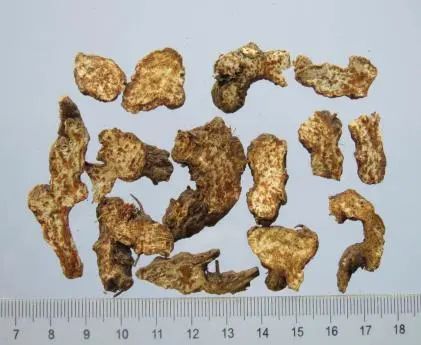
Atractylodes lancea
Raw Atractylodes has a stronger ability to dry dampness and dispel wind-cold.
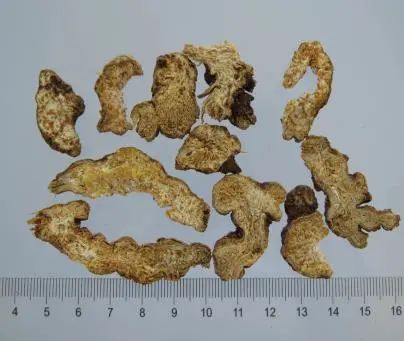
Atractylodes chinensis
Roasted Atractylodes moderates its drying properties, enhances its aromatic qualities, and strengthens its spleen and stomach functions.
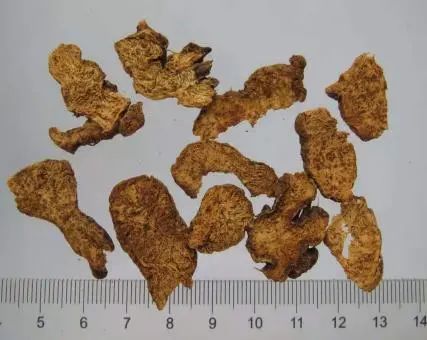
Roasted Atractylodes
#04
Atractylodes vs. Bai Zhu (White Atractylodes)
The term “Zhu” first appeared in the “Erya”: “Zhu, mountain thistle.” Atractylodes was first used as a medicinal material in the “Shennong Bencao Jing”, classified as a superior herb. However, before the Han dynasty, the term “Zhu” was used interchangeably without distinguishing between Bai Zhu and Atractylodes. During the Southern and Northern Dynasties, Tao Hongjing proposed the distinction of “red and white”, leading to the gradual differentiation of Atractylodes and Bai Zhu, although not clearly defined. Research suggests that the “Zhu” before the Song dynasty is closer to Atractylodes lancea, but since the Song dynasty, Bai Zhu has been highly regarded, leading scholars to revise earlier texts to uniformly refer to “Zhu” as Bai Zhu, a practice that continues to this day.

Roasted Atractylodes
When using classical formulas in clinical practice, should “Zhu” refer to Bai Zhu or Atractylodes? It is recommended to use Atractylodes lancea for formulas recorded before the Han dynasty that mention “Zhu”. If the prescription specifies “Bai Zhu”, the medicinal source should be Atractylodes macrocephala. The classical formulas that list “Atractylodes” should refer to the current Atractylodes lancea. It is also possible to select the appropriate source based on the formula’s therapeutic purpose.
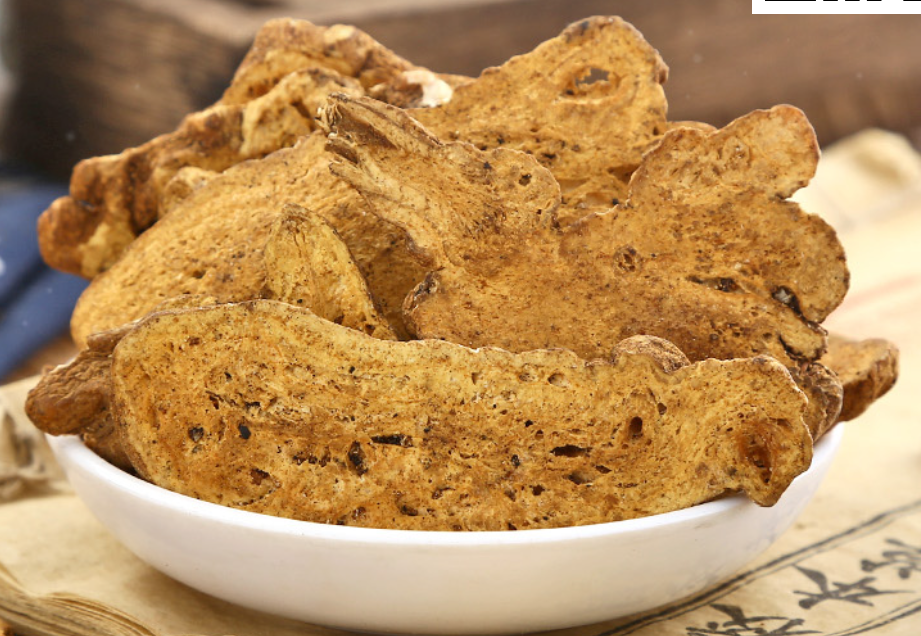
Roasted Bai Zhu
Atractylodes: Atractylodes primarily has a bitter, warm, and damp-drying nature, serving as a key herb for spleen function, suitable for conditions of internal dampness and excess. It also has the effects of inducing sweating, dispelling wind-dampness, and improving vision, commonly used to treat wind-cold with dampness, wind-dampness bi syndrome, night blindness, and blurred vision.
Bai Zhu: Bai Zhu primarily strengthens the spleen and benefits qi, serving as a key herb for spleen tonification, suitable for conditions of spleen deficiency with dampness. It also has diuretic, sweat-stopping, and calming effects, used to treat spleen deficiency with edema, spleen and lung qi deficiency, unstable wei qi, spontaneous sweating, and fetal restlessness.
#05
Clinical Applications of Atractylodes
Atractylodes is pungent, bitter, and warm, entering the spleen, stomach, and liver meridians. It dries dampness, strengthens the spleen, dispels wind-dampness, and improves vision. Modern pharmacological studies indicate that its volatile oils can counteract intestinal spasms caused by the parasympathetic neurotransmitter acetylcholine; Atractylodes preparations can also counteract intestinal muscle relaxation induced by the sympathetic neurotransmitter adrenaline; Atractylodes alcohol can promote gastrointestinal motility; Atractylodes decoction has blood sugar-lowering, sodium excretion, and potassium excretion effects; its vitamin A-like substances can treat night blindness and corneal softening.
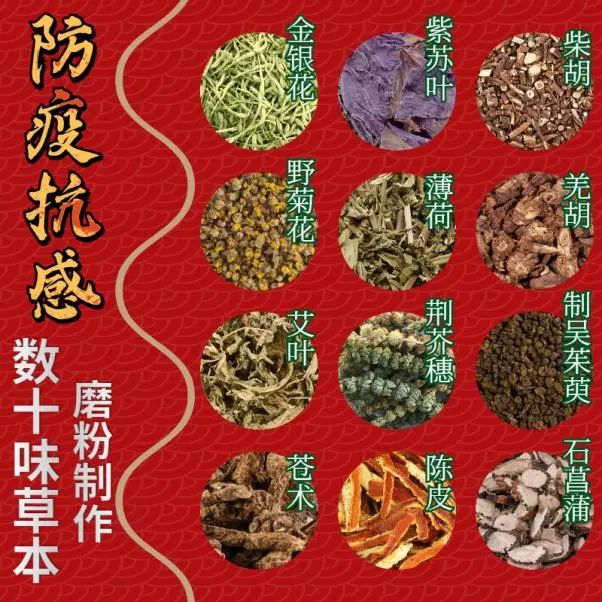
Due to its aromatic properties, Atractylodes has a purifying effect. At the onset of COVID-19, traditional Chinese medicine sachets played a role in epidemic prevention.
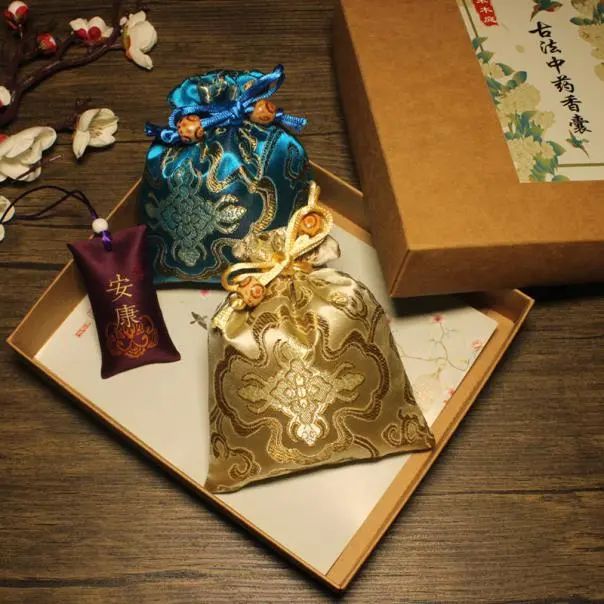
Some people also use Atractylodes to make incense for air purification.
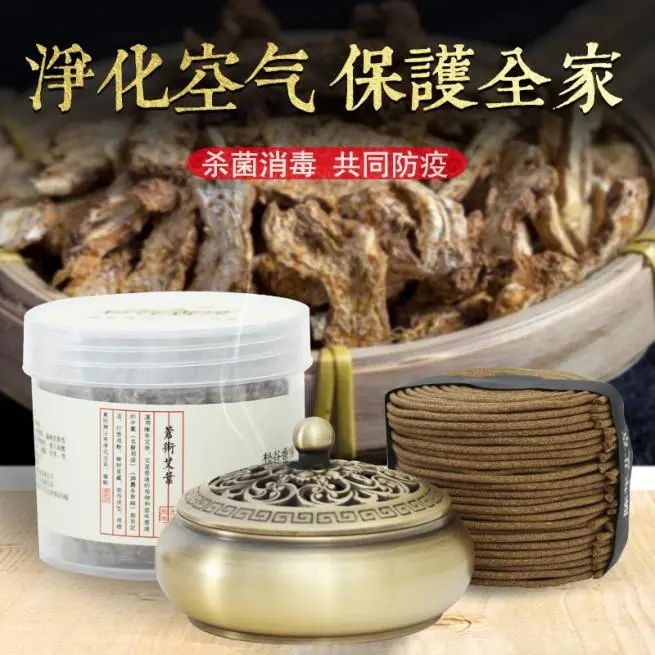
Atractylodes, along with Agastache rugosa and Poria cocos, is also made into tea bags in appropriate proportions to strengthen the spleen, eliminate dampness, and freshen breath.
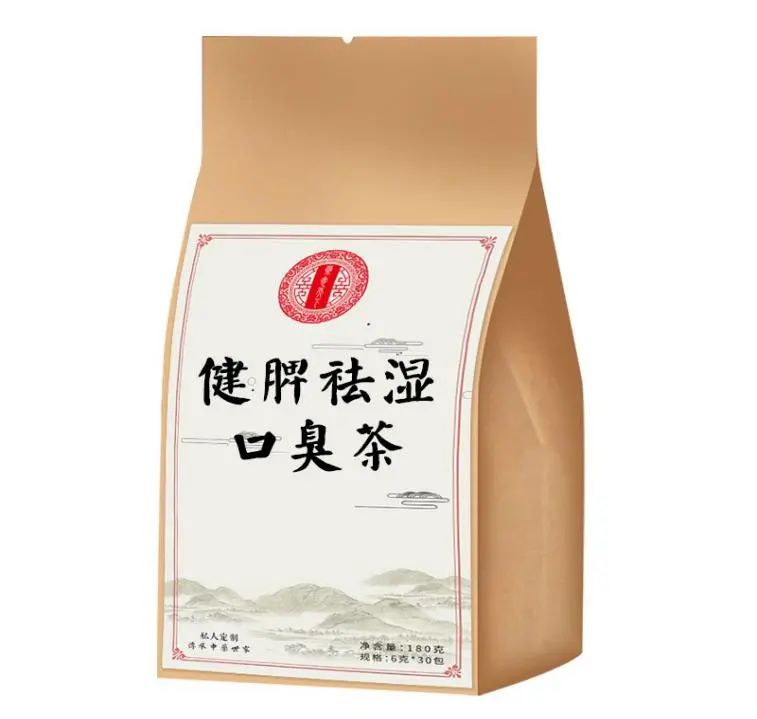
The following is for medical students; those who understand will naturally comprehend.
According to the “Shennong Bencao Jing”, Atractylodes is bitter and warm. It is indicated for wind-cold-damp bi syndrome, muscle atrophy, jaundice, stopping sweating, clearing heat, and aiding digestion, and can be made into decoctions. Long-term use can lighten the body and prolong life, preventing hunger.
According to the “Bencao Jing Jizhu”, it is bitter and sweet, warm, and non-toxic. It is indicated for wind-cold-damp bi syndrome, muscle atrophy, jaundice, stopping sweating, clearing heat, and aiding digestion. It is effective for major wind in the body, dizziness, tearing eyes, clearing phlegm, expelling wind-water swelling, relieving abdominal fullness, and treating cholera, persistent vomiting and diarrhea, benefiting the waist and navel blood, nourishing body fluids, warming the stomach, aiding digestion, and promoting appetite. It can be made into decoctions. Long-term use can lighten the body and prolong life, preventing hunger.
(Ye Tianshi: In the “Bencao”, there is no distinction between Atractylodes and Bai Zhu; their functions are the same. Since the Song and Yuan dynasties, they have begun to differentiate, stating that Bai Zhu is bitter and sweet, harmonizing the middle jiao, clearing spleen and stomach dampness, used to stop sweating; Atractylodes is bitter and pungent, with a strong upward action, clearing upper dampness, and has a significant sweating effect.)
According to the “Leigong’s Discussion on the Processing of Medicinal Properties”, it is sweet and pungent, warm, non-toxic, and enters the spleen and stomach meridians. It is indicated for harmonizing the stomach, strengthening the spleen, dispersing stagnation, inducing sweating, expelling dampness, and alleviating malaria. It should be soaked overnight, rinsed, and then fried for use.
Atractylodes is pungent and sweet, expelling dampness, which the spleen and stomach favor, thus it is suitable for use. It is approximately equal in function to Bai Zhu, as its properties are said to harmonize the stomach and induce sweating, which is greater than Bai Zhu. Furthermore, it is said to tonify the middle and expel dampness, but its strength is not as great as Bai Zhu, which is reasonable. The method of expelling dampness is primarily through inducing sweating; how can there be excessive sweating without expelling dampness? Once dampness is removed, the spleen benefits. If one believes that inducing sweating cannot tonify the middle, then how could it be called a mountain essence? It can be refined and consumed for longevity. It also gathers the essence of yin and yang. Some practitioners misunderstand its drying properties and do not use it regularly, not realizing that the spleen is the organ that governs, and it prefers dryness; there has never been a case of strong spleen qi causing damage to other organs.
According to the “Yuqiu’s Explanation of Medicinal Properties”, it is sweet and slightly pungent, entering the foot Taiyin spleen and foot Yangming stomach meridians. It dries the earth, benefits water, drains fluids, eliminates phlegm, resolves stagnation, and alleviates fullness, transforms masses, and eliminates symptoms. It also prevents mountain and marsh diseases, alleviates muscle and bone weakness, and clears turbid urination. Bai Zhu retains and does not disperse, while Atractylodes disperses and does not retain; thus, Bai Zhu is good for tonifying, while Atractylodes is good for dispersing. Both can aid digestion and stop vomiting and diarrhea, but Atractylodes excels in draining water and relieving stagnation. The wood is the azure dragon, transforming color due to the earth; the metal is the white tiger, transforming shape due to the earth. Bai Zhu enters the stomach, its nature is static and specialized, thus it excels in retention; Atractylodes enters the spleen, its nature is dynamic and fluctuating, thus it excels in dispersing. When entering the stomach, it also reaches the pungent metal and descends the turbid; when entering the spleen, it also disperses the wood and resolves stagnation. Bai Zhu’s ability to quench thirst and generate fluids is due to the dryness of the earth and the clarity of the metal; Atractylodes’ ability to eliminate sourness and decay is due to the dryness of the earth and the flourishing of wood. Bai Zhu, which primarily enters the earth, has more functions in nourishing grains, while Atractylodes, which primarily enters the earth, has stronger functions in digesting grains. When the earth is strong, the clear rises and the turbid descends; when the earth is weak, the turbid descends and the clear rises. However, the ability to reach one another is a combined strength, while the ability to prioritize one over the other is a specialized effect. If both the spleen and stomach are to be treated, Atractylodes and Bai Zhu should be used together. The Maoshan variety is the best, processed similarly to Bai Zhu. The new method for preparing both Atractylodes is as follows: select one pound each of firm and fresh Atractylodes lancea and Atractylodes chinensis, soak them separately in water, change the water to ensure thorough soaking, peel, slice, and dry. Eight taels each of Astragalus, Codonopsis, fresh ginger, and Pinellia should be boiled to extract a concentrated juice, which is then used to soak Bai Zhu. Eight taels each of jujube, longan, and Amomum should be boiled to extract a concentrated juice, which is then used to soak Atractylodes. Each should be steamed in a clay pot with wet rice covering it, then dried. Soak and steam again until the juice is exhausted. The amount should be combined with warm water and cooked together; long-term consumption can indeed prolong life and prevent aging. The transformation of the earth and water, the interaction of fire and water, and the principles of gathering lead and mercury. Medical practitioners do not understand this and mistakenly use yin-tonifying herbs, hastening life and leading to premature death, which is truly regrettable! Roasted Bai Zhu with yellow earth and roasted Atractylodes with sesame are made without knowledge and are extremely misguided!
Image and text editing: Du Jiarong
Typesetting: Zhu Yulin
Proofreading: Jiang Xiaoxi, Li Nan, Guo Xingchi
Supervising Teachers: Zhang Huiyong, Wu Wei, Wei Yanjun


